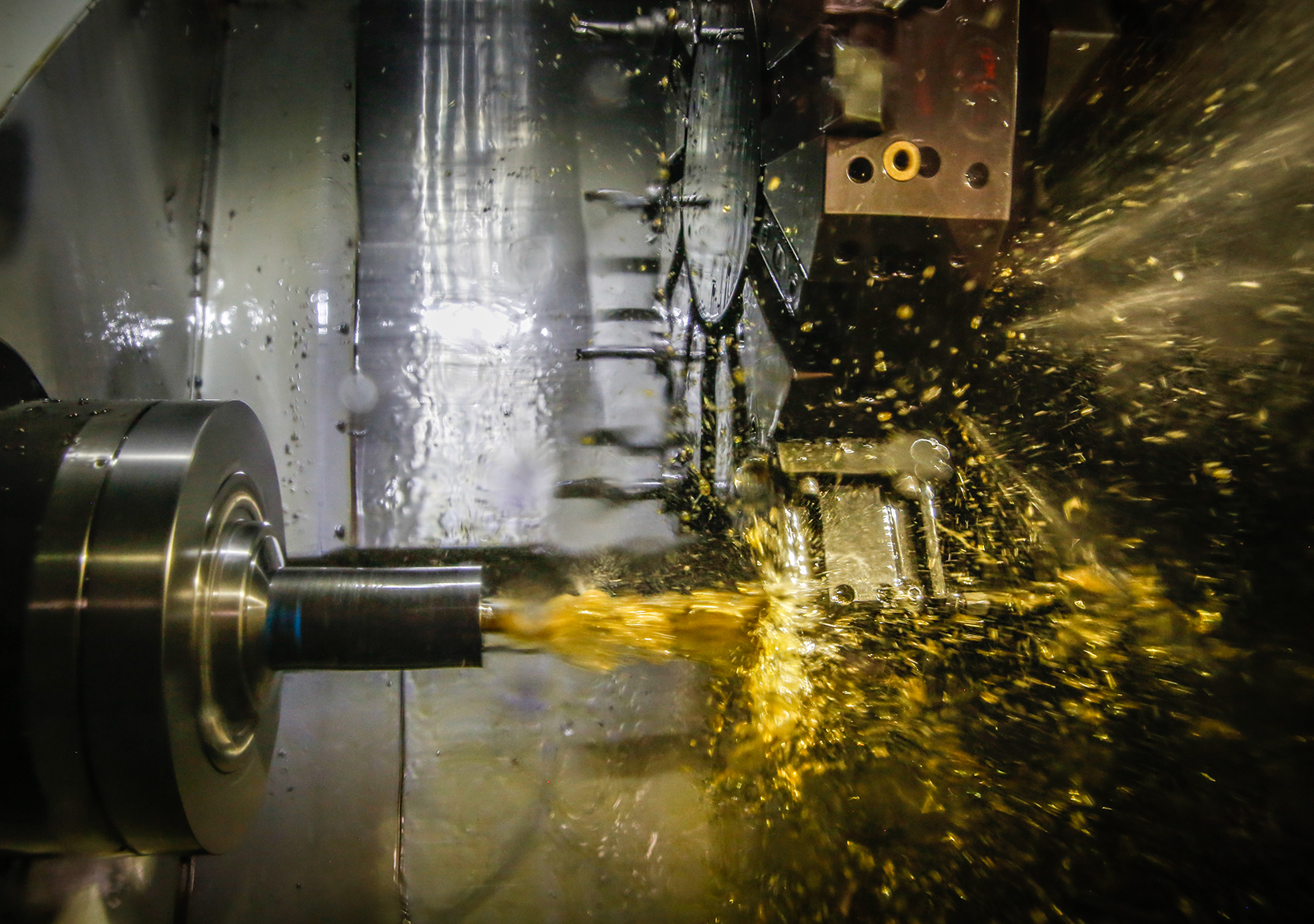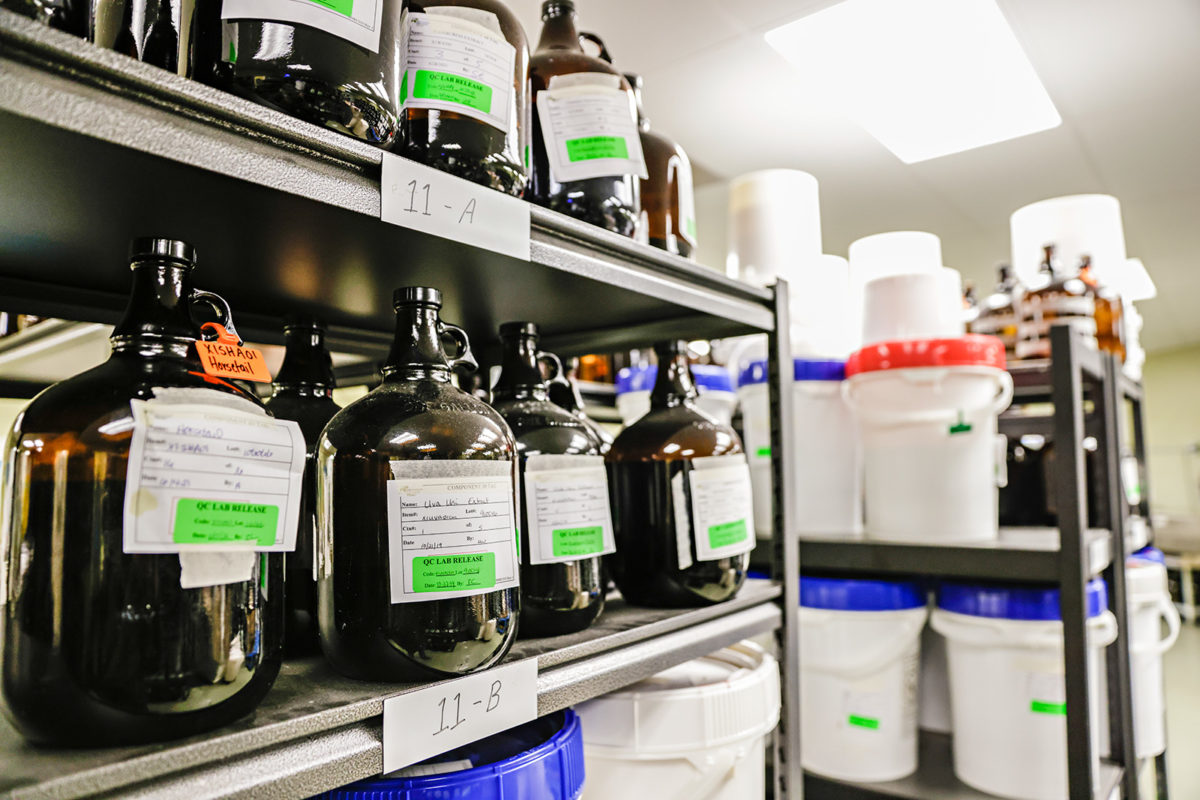Tight Workforce Persists as Manufacturing Industry Experiences Fastest Statewide Economic Growth
The sector saw a real annual GDP growth of 12.4% statewide last year, even as Flathead manufacturers report a desperate struggle to find qualified employees
By Maggie Dresser
At Montana Global Health’s 40,000-square-foot facility in Evergreen, where the company has been manufacturing powder and liquid supplements since 2019, President Terri Chichester has anywhere between 35 to 71 employees at any given time. Her staff wears personal protective equipment and stands on concrete for 10-hour shifts, running machines, following regulations and providing quality checks for dietary supplements.
“It’s not a glamorous job,” Chichester said.
Chichester says in addition to the 150% tariffs that are getting slapped onto her products, maintaining a consistent workforce is her greatest challenge.
“We just need people who want to show up every day to work,” Chichester said.
At an Oct. 21 Flathead Manufacturing Symposium hosted by the Kalispell Chamber of Commerce, business owners, Montana Department of Labor and Industry (DLI) officials and manufacturing experts said the workforce remains one of industry’s top challenges.
Despite the 280 manufacturing job losses that stemmed from the closure of two lumber mills last year, DLI Chief Economist Amy Watson said the industry is experiencing job gains of about 100 per year statewide since 2020. But employers say as their businesses grow, the added jobs are increasingly difficult to fill.
Last year, manufacturing experienced the fastest growth of any industry in the state with a real annual GDP of 12.4%, while there was a 2.5% real wage growth in the sector. Over the next decade, DLI projects a .7% per year growth in manufacturing, according to Watson.
Fabricated metal products, petroleum and full product manufacturing have seen significant growth, which has been driving employment gains, while wood products and chemical manufacturing has declined.
“There’s a lot of variation within the manufacturing industry as to where employment has been growing,” Watson said. “In general, we do project a return to growth and employment for manufacturing.”
At Kalispell-based Invader Concepts, founder and owner Tim Anderson builds tactical hunting gear from start to finish at his 9,000-square-foot facility in Evergreen and has dramatically expanded his staff in recent months as his business grows.
“We do everything in-house – from research and development to high-volume production,” Anderson said.
In the last three months, Anderson hired 15 new employees, growing his company to 30 staffers. Since relocating to the Flathead Valley from Washington two years ago, the company has grown 10% to 50% every month.
As the company hits its stride, Anderson says finding program engineers to run 3D product development software along with filling other positions like marketing that require face-to-face interactions is difficult.
Workforce challenges in the manufacturing industry have persisted in recent years as baby boomers retire and unemployment rates remain below 3% – with 1.8 jobs for every unemployed person, according to Watson.

In the wood products manufacturing industry, employers have in recent years struggled with labor shortages stemming from retirements that have not been replaced by younger generations.
Pyramid Mountain Lumber, for example, closed last year partially due to a lack of available housing for mill workers. Other mills in northwest Montana have also reported difficulty finding employees, with shift work becoming less appealing to younger generations.
As of Oct. 22, there were seven job openings ranging from entry level production associates to millrights at Weyerhaeuser in Columbia Falls.
But even as some industries like wood products are declining, manufacturing continues to expand in Montana, growing 80% since 2017 with 5,586 manufacturers statewide, which includes “guys making knives in their garage,” according to Paddy Fleming, the director of Montana Manufacturing Extension Center (MMEC). There are 903 manufacturers in Flathead County.
“That’s quite an accomplishment for Flathead County,” Fleming said.
But despite the growth, Fleming said the labor intensiveness of some positions creates barriers, and many manufacturers are “desperate for qualified employees.” Using automated machines, he said, could help fill these positions that have been historically difficult to fill.
“There’s probably a reason nobody wants to pull on that green chain anymore,” Fleming said, referring to a once manual lumber delivery system that has since become automated. “Where are your back injuries? Where are your carpal tunnel injuries? That’s a good opportunity to automate … automation does not result in job losses. Generally, it takes a nasty task away from an employee and allows them to do more value-added work.”
Other employee recruitment tools including include the DLI apprenticeship program, which some employers have reported lead to a 50% reduction in employee turnover.
At Job Service Kalispell, Manager Laura Gardner says the DLI offers a variety of programs like the income worker training program, which helps current workers advance in a company. Connecting under-utilized demographics like retirees and disabled individuals has also been a focus of the organization.
Residents of the new prerelease center that is scheduled to open in Evergreen this month, for example, presents a unique opportunity to fill vacancies.
“We’re going to have groups of 45 men who have to be working while they’re here,” Gardner said. “They’ve earned their right to be part of this reentry, but they have to be working. They’re going to be a reliable work source because if they don’t show up for work one day, they go back into incarceration.”
